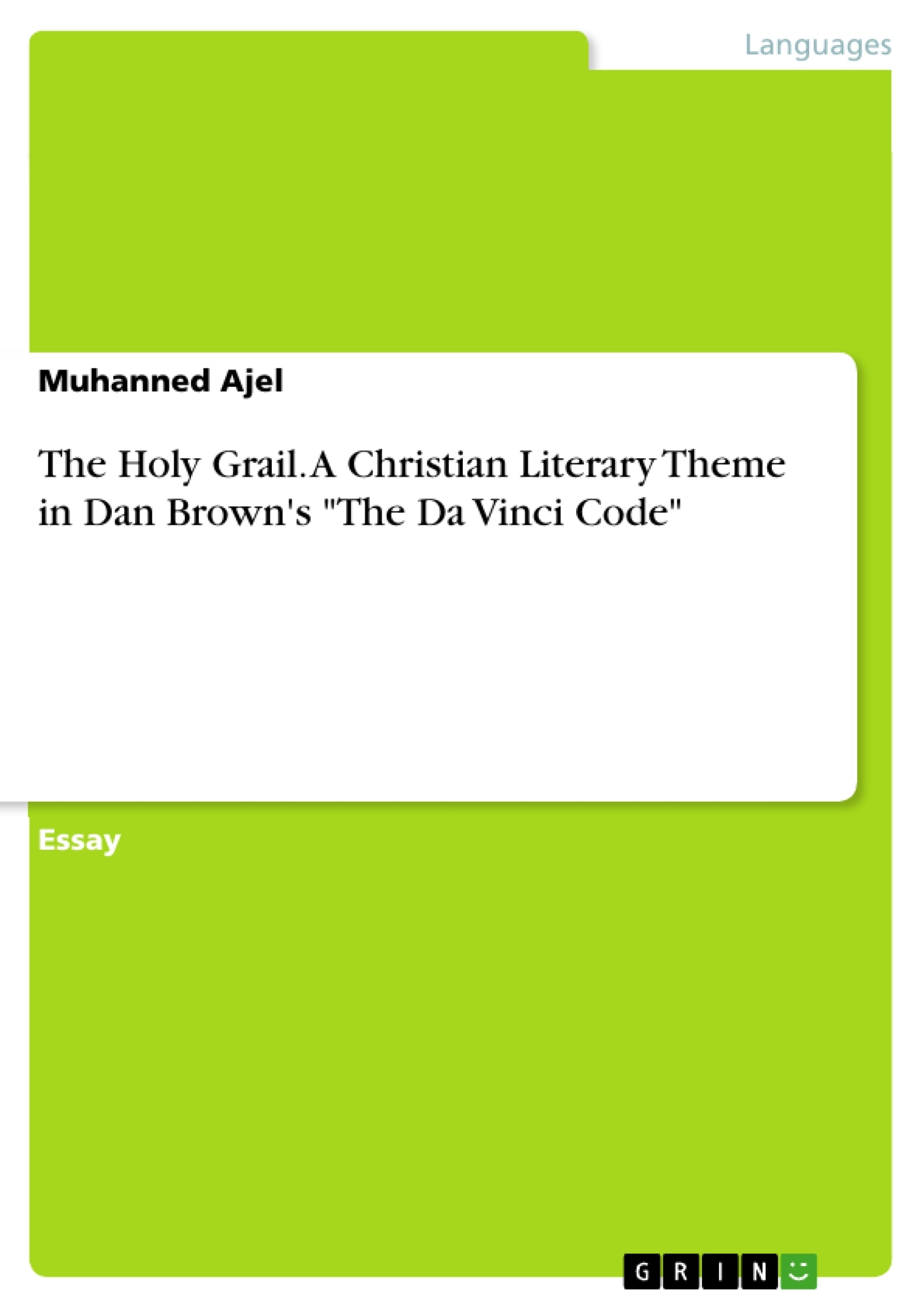This essay follows the path of the Holy Grail all into modern literature: Dan Brown's "Da Vinci Code". A look at the origin of the myth of the Holy Grail helps contextualise the element in the novel.
The novel is part of the exploration of alternative religious history, whose central plot point is that the Merovingian kings of France were descendants from the bloodline of Jesus and Mary Magdalene. The idea of the holy grail that is discussed in the novel and the role of the Magdalene in the history of Christianity is considered as an attack on the Roman Catholic Church.
Table of Contents
- The word "grail"
- The holy grail
- Many stories involved the grail exist
- Ropert de Boron
- The grail is first featured in Perceval
- For Chretien the grail was a wide
- Perceval's guest
- In "Sir Galahad"
- Sir Galahad survived this test
- After that these three knights came across Sir Perceval's sister
- Galahad's incredible prowess and fortune in the quest for the holy grail
- T. S. Eliot
- Although Eliot spoke greatly about the grail in his poem
- The Holy Blood and the Holy Grail
- The fate of the holy grail is unknown
- Dan Brown, best-selling author of The Da Vinci Code
- In 1997, Dan Brown and Blythe Newlon were married
- The conflict between religion and science can extend even to Brown's life
Objectives and Key Themes
This text explores the historical and cultural significance of the Holy Grail, focusing on its representation in literature and Christian tradition. The author examines the evolution of the Grail myth, tracing its origins, development, and interpretations across various literary works.
- The origins and development of the Holy Grail myth
- The Grail's symbolic and spiritual significance
- The Grail's connection to Christian beliefs and figures
- The Grail's portrayal in different literary works
- The relationship between religion and science
Chapter Summaries
- The word "grail" - This chapter defines the term "grail" and explores its origins in Old French.
- The holy grail - This chapter discusses the concept of the Holy Grail as a sacred object in Christian traditions, often associated with the Last Supper or Jesus's crucifixion.
- Many stories involved the grail exist - This chapter outlines several stories surrounding the Grail, highlighting its miraculous powers and its role in various legends.
- Ropert de Boron - This chapter introduces Ropert de Boron, a French poet who gave the Holy Grail myth a Christian dimension in his poem "Joseph d'Arimathe."
- The grail is first featured in Perceval - This chapter discusses the Grail's appearance in Chretien de Troyes's "Le Conte du Graal," where Perceval witnesses a procession involving a bleeding lance, candelabras, and a grail.
- For Chretien the grail was a wide - This chapter analyzes Chretien de Troyes's description of the Grail as a wide dish or bowl, focusing on its symbolic significance and the significance of the mass wafer it contained.
- Perceval's guest - This chapter examines the deeper meaning of the Grail in "Le Conte du Graal," suggesting that it represents the continuation of Christ's effectiveness in the world.
- In "Sir Galahad" - This chapter delves into Alfred Lord Tennyson's "Sir Galahad," describing how Galahad, a pure knight, fulfills the prophecy of the Siege Perilous and becomes the greatest knight of the world.
- Sir Galahad survived this test - This chapter continues the story of Sir Galahad, detailing his adventures and his ultimate quest for the Holy Grail.
- After that these three knights came across Sir Perceval's sister - This chapter narrates the journey of Galahad, Perceval, and Bors, who find themselves on the Grail ship and encounter various challenges and losses.
- Galahad's incredible prowess and fortune in the quest for the holy grail - This chapter attributes Galahad's success in the Grail quest to his piety and purity, emphasizing the importance of a sinless life.
- T. S. Eliot - This chapter examines T.S. Eliot's poem "The Waste Land," focusing on the archetypal story of a king's illness and a knight's quest for the Holy Grail to restore his kingdom.
- Although Eliot spoke greatly about the grail in his poem - This chapter discusses the criticism of Eliot's poem, arguing that it emphasizes the elements and figures surrounding the Grail rather than the Grail itself.
- The Holy Blood and the Holy Grail - This chapter introduces the controversial book "The Holy Blood and the Holy Grail" and its hypothesis about the historical Jesus's marriage and the lineage of his children.
- The fate of the holy grail is unknown - This chapter explores the various claims regarding the location and ownership of the Holy Grail, highlighting its elusive nature.
- Dan Brown, best-selling author of The Da Vinci Code - This chapter introduces Dan Brown, the author of "The Da Vinci Code," providing a brief biographical sketch.
- In 1997, Dan Brown and Blythe Newlon were married - This chapter focuses on Dan Brown's personal life and his transition from a musician to a bestselling author.
- The conflict between religion and science can extend even to Brown's life - This chapter delves into Dan Brown's personal conflict between religion and science, revealing his evolution in beliefs.
Keywords
The main keywords and focus topics include: Holy Grail, Christian tradition, Grail myth, literary representations, symbolism, spiritual significance, Joseph d'Arimathe, Chretien de Troyes, Sir Galahad, Sir Perceval, Sir Bors, The Waste Land, The Holy Blood and the Holy Grail, Dan Brown, The Da Vinci Code, religion, science.
- Citar trabajo
- Muhanned Ajel (Autor), 2017, The Holy Grail. A Christian Literary Theme in Dan Brown's "The Da Vinci Code", Múnich, GRIN Verlag, https://www.grin.com/document/379365



